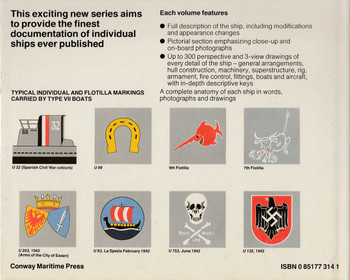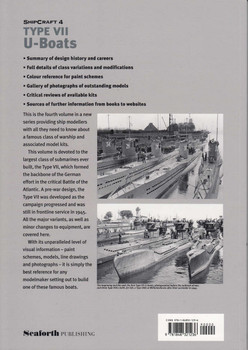Description
Author: Jean-Philippe Dallies-Labourdette,Hardbound, 144 Pages, ISBN: 9782908182422 - First Edition, 1996**RARE BOOK IN EXCELLENT UNREAD CONDITION**
When Hitler repudiated the terms of the Treaty of Versailles in 1935 and began to rebuild the Kriegsmarine, submarines were to be one of its major assets, particularly as the experience of Word War 1 had shown that the
Royal Navy was totally powerless against the U-Boat threat.
In September 1939, the Kriegsmarine's submarine component amounted to eight flotillas, totalling 65 U-Boats, several of which were Type VIIA and B, the forerunners of the excellent Type VIIC which was used successfully throughout the war.
The U-Boats quickly became a dreaded foe notably after U-47 commanded by Kapitanleutnant Gunther Prien, raided Scapa Flow, the Royal Navy's Home Fleet harbour, on 14 October 1939, sinking the battleship HMS Royal Oak.
The fall of France in 1940 brought about a drastic change in U-Boat tactics : from then on, the Kriegsmarine could roam freely all over the Atlantic from captured harbours on the French coast. Admiral Karl Donitz, the commanding officer of the submarine force, set up his command post at Lorient, in Brittany, as huge concrete pens were built at Brest, [orient, SaintNazaire, La Pallice and Bordeaux.
Thanks to their increased range, the U-Boats took an increasingly heavier toll of Allied shipping — even though the devastating rampage of 1917 was never equalled. But soon, the U-Boat crews had to contend with Allied countermeasures and began to lose heavily to their foes' improved detection systems and air superiority. This was never so much evidenced as by the Kriegsmarine's powerlessness to oppose the landings in Normandy in 1944.
From then on, the situation of the German submarine force deteriorated irredeemably and could not be staved off by the introduction of new designs such as the Type XXI and the midget submarine. When Germany capitulated —in the form of Admiral Karl Donitz, by then Hitler's designated successor — the submarine force has almost been bled white, losing about 32,000 out of 36,000 crewmen in action.
This work presents a complete breakdown of U-Boat activities, from the evolution of the submarines, their variants, the description of French bases and the all facets of Allied anti-submarine warfare. It includes plans, colour profiles and more than 300 photographs drawn from German, French, British and American sources.














